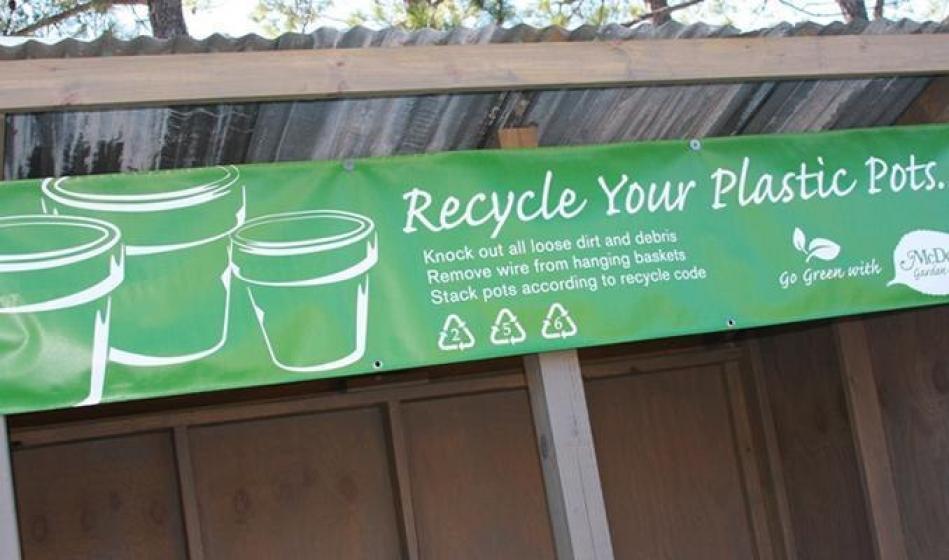Earth Day is a time to both celebrate Mother Nature and find ways to improve it. We're all looking for ways to make a difference in the world around us. Take a look at some simple ways to go green in your garden.
- Keep it clean. When it comes to weedkillers and fertilizers, choose organic options such as Natural Guard Weed Control and Jonathan Green Organic Weed Control. We recommend Espoma Organic Fertilizer to add organic nutrients for your plants. Stick to good old fashion, all-natural compost, like McDonald’s Compost! This naturally rich compost blend is ideal to use in outdoor gardens, plant beds, raised veggie gardens and lawns.
- Become a composting champ. Sure it’s easy to go out and buy a great bag of organic compost for your garden, but you can save a little green by making your own ‘gardener’s gold’ compost. Compost is just organic matter that decomposes over time, leaving a fertile, rich soil. You can speed up the natural decomposition with a Natural Guard Compost Maker. You now are keeping trash out of landfills forever, while creating high quality compost.
- Reduce, reuse, recycle your plastic pots. Stock up on fresh plants this spring and return your plastic pots to any year-round McDonald location. Just empty your pots’ contents and bring the pots to the Trees & Shrubs nursery yard and drop them in our Pot Recycle Bin. We gladly accept #2, #5, and #6 pots (number is found no the underside of the pot inside a small triangle). learn more >>
- Grow your own food. There’s never been a better time to be a backyard farmer. With all the hoopla out there about pesticides, organics, and GMOs, just skip the risks and know exactly where your food comes from. Don’t have space? Forget mowing your lawn, just make your lawn your farm!
- Harvest rainwater. Saving water is cheap and effortless if you add a rain barrel to your outdoor space. This will capture mineral and chlorine-free water for putting back into your lawn or garden. An added benefit of harvesting rainwater is you will help reduce storm water runoff, which helps prevent erosion and flooding. Worried about bugs getting in your water? just pop a screen on top of your barrel.
- Go native. Grow plants that are already adapted to your local conditions. Native plants are easy to grow and maintain, and they benefit the local ecosystems. learn more >>
- Help beautiful butterflies and bees bloom. Create a pesticide-free sanctuary for out pollinator pals like bees and butterflies. We're in the middle of a major bee-loss epidemic in the US and a little local hospitality can really help out. Grow a variety of native flowers that they are attracted to such as butterfly bushes, petunias, phlox, and verbena. Pick up a backyard Mason Beehouse at any year-round McDonald. Find local plants for butterflies >>
- Plant a tree.Trees help purify the air, give wildlife a home, and could save you big on energy costs. Large deciduous trees planted on the east and west sides of your home create shade from the hot sun and reduce summer air conditioning costs by up to 35%.
- Repel bugs the natural way. Help beat the bugs with a do-it-yourself mosquito repelling container. Try a recipe of marigolds, mint, rosemary, citronella geranium, and lemon grass in a large container. It’ll smell and look great, and keep the bugs away. You can also use lady bugs and praying mantis to eliminate harmful bugs in your garden. learn more >>
- Water wisely. Water your garden early in the morning when it’s cooler so the water won’t evaporate. Watering in the afternoon and early evening is also key so the plants have time to dry before nightfall. Install a trickle-drip irrigation system close to the roots of your plants so the water is dripped slowly, without spraying. learn more >>

